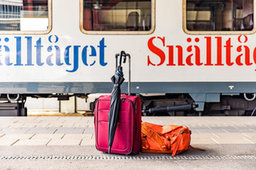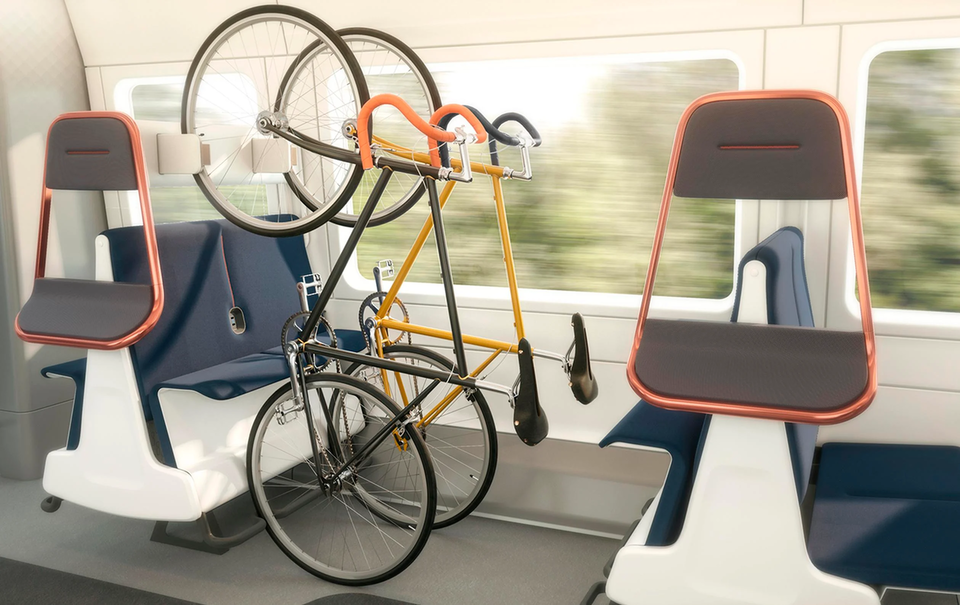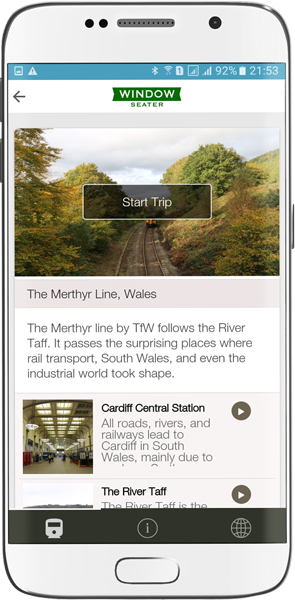Technology
The technology that will improve post-pandemic UK rail journeys
The theme of this year’s First of a Kind competition was building back railway in a greener and more-passenger friendly way to attract back travellers a year and a half after the start of the Covid-19 pandemic. Ilaria Grasso Macola rounds up some of the most interesting technologies to find out how they will help bring back capacity to the UK railway network.
On
2 July, UK Transport Secretary Grant Shapps announced the winners of the First of a Kind (FOAK) competition, sponsoring innovative technology that will revolutionise the railway industry.
A partnership between the UK Department for Transport and innovation agency Innovate UK, FOAK has allocated a total of £9m to 30 winning projects that best encompass this year’s theme – making railways cleaner, greener, and more passenger-friendly post-Covid-19.
“These winners will hopefully play a role in putting passengers at the centre of our railways as we build back better from Covid-19,” Shapps commented after announcing the winners. “The competition always throws up surprises and the ideas shown today could transform how we travel in future.”
Despite progress made by the industry to minimise coronavirus-related risks, passengers are still quite hesitant when it comes to travelling by rail. As reported by Milestone Systems’ research, 39% of British travellers still don’t feel comfortable and are more reluctant when it comes to taking public transport.
“To give them ever greater confidence that rail is safe and sustainable, we called upon UK innovators to come up with fresh ideas,” added Innovate UK deputy executive chair and chief business officer Simon Edmonds.
“Yet again the response has been fantastic. Not only will passengers benefit from these great innovations, but business prospects are bright in this sector too.”
Interchangeable train interiors, as well as an app that connects passengers to the landscapes via audiobooks, feature among this year’s winners.
Network Rail CEO Andrew Haines. Credit: Network Rail

Geospatial visualisation for real-time information
To restore passengers’ confidence post-Covid-19, British company Signalbox Technologies is working on a technology that uses geospatial visualisation for real-time information.
Earlier this year, Trainline partnered with Signalbox Technologies to implement journey detection software on the international digital rail and coach technology platform’s app feature, ‘Find My Train’.
With a FOAK grant of £96,550, Signalbox Technologies is building a system to visualise train movements of the whole UK network, allowing smartphones to pinpoint their train and create a journey visualisation that can be shared with others.
“Giving passengers access to real-time maps of their journeys is a useful and engaging way to support people as they travel,” said Kate Andrews, Signalbox project manager, in a statement following the announcement.
“These tools, which display status and platform updates in a more visual way – as well as enabling sharing of a live location – can leverage the power of our smartphones to provide personalised journey updates and improve the experience of rail passengers.”
SignalBox shows live locations of trains in the UK in real-time.
Passive flexibility for railway interiors
Transport design firm PriestmanGoode is among this year’s FOAK winners, having received a £399,998 grant to create Proteus, a flexible rail interior system that will reassure passengers post-Covid-19.
According to data from Transport Focus, the areas passengers experience the most anxiety when it comes to rail travel are personal space and social distancing, as well as lack of hygiene on trains.
In research carried out in October 2020, Transport Focus found that more than a half of respondents quote the lack of social distancing as one of the main reasons why they were avoiding public transport, while two out of five people said it was due to a mistrust of hygiene procedures aboard trains.

Proteus facilitates easier cleaning and a layout allowing operators to bring seats in and out of service according to demand immediately. Credit: PriestmanGoode
The pandemic has also changed passengers’ travelling habits, as post-coronavirus experts predict that morning and evening peaks will flatten, with commutes will becoming less frequent and micro-mobility modes, such as bikes, a more common sight on trains.
To solve these issues, while conceding rail operators enough room to be flexible, Priestman Goode has come up with an onboard layout that encompasses the principle of ‘passive flexibility’ to help operators bring seats in and out of service according to demand and be able to make those changes immediately or overnight in-depot – without taking the trainset out of service and requiring engineering support.
A new definition of personal space within carriages, a seat design that is easier to clean, and an increase in storage space feature as part of the new layout.
The project – a partnership between Priestman Goode and other railway technology companies – will be developed in the next few months, with the first designs expected to be ready by Spring 2022.
Connecting passengers to the landscape
Initially created in 2018, the Community Rail Content Platform is a project run by UK start-up Window Seater. The aim is to connect passengers to the landscape while travelling by train, through geo-located audio stories.
The company partnered with Community Rail Network and operator Great Western Railway, and received a grant of almost £150,000 to develop the app. The local stories present in the app will be collected by community rail partnerships with passenger-facing technologies used by railway organisations, improving customers experience and connecting passengers to their communities.

Window Seater connects rail travellers to the world outside their window. Credit: Window Seater
After initially testing the technology in Thailand, the platform was subsequentially trialled in 2020 in Wales, where research showed an increase of 22% in the number of people saying they enjoyed their journey.
“We are delighted to be working directly with the people who know the stories along the railway best – this new tech will allow us to harness the passion and knowledge of these communities, increasing the quality and scalability of our guides,” said Marcus Allender, business development director at Window Seater, following the announcement.
“Improving customer experience, better utilising Community Rail Partnerships and getting people back on trains are all core goals of the Williams-Shapps Plan for Rail, which this project dovetails with perfectly.”
The technology will take six months to develop, with December 2021 the expected date of completion. Window Seater will start the commercial uptake in 2022, covering the entirety of the UK long-distance and rural network by the end of 2023.
Environmentally friendly locomotives
At a cost of almost £400,000, UK company Clean Air Power is working on technology that will demonstrate that both hydrogen and low emission gases can be used on dual freight locomotives, generating enough power to meet operational requirements.
The technology – a first step in the railway low carbon road map – will eventually allow the operation of hydrogen-fuelled trains and will be demonstrated aboard a Class 66 train.
The initiative marks the first time that this technology, which is widely used in the on-road industry, will be applied to the rail freight sector in such an important class of locomotive. The work will take place over nine months.
Our solution offers a route to viable, long-term decarbonisation and its associated cost benefits, which will be practical to implement and scale.
Following the award, Dan Skelton, managing director of Clean Air Power, said: “We’re delighted to be awarded this financial backing and are now focussed on delivering a fully functioning low-carbon, low-emission, hydrogen-friendly Class 66 locomotive.
“Our solution offers a route to viable, long-term decarbonisation and its associated cost benefits, which will be practical to implement and scale. We have successfully worked alongside the likes of Volvo, Mercedes, DHL, Caterpillar and Perkins previously, and are looking forward to transferring our know-how and expertise to this new and exciting market.”
Retrofitting freight locomotives with hybrid electric solutions
British hybrid vehicle developer Meteor Power has received funding for almost £400,000 to retrofit old locomotives with a hybrid electric solution.
The programme, which was born out of the industry’s need to speed up its green revolution, is made for those freight locomotives that have been operational for more than 60 years, and are either struggling with the technology that has now become obsolete or need parts that are no longer in production.
Instead of tearing them down, Meteor Power’s project – which will initially be tested on one Class 37 and two Class 08 locomotives – will retrofit them with a hybrid electric powertrain that is suitable for mainline freight applications.
The hybrid electric solution is not the only Meteor Power solution to secure FOAK funding, as the company has received almost £400,000 to develop an energy capture, storage, and delivery system that captures energy when the train slows down, then releasing it when the train starts or speeds up.
The system, the developers say, will allow freight trains to accelerate more quickly from a position of stop.
Main image: Travelers board the Paris-Nice night train between Paris and Nice on 20 May 2021, the day it returned to service after being on hiatus since December 2017. (Photo by Anne-Christine Poujoulat/AFP via Getty Images)